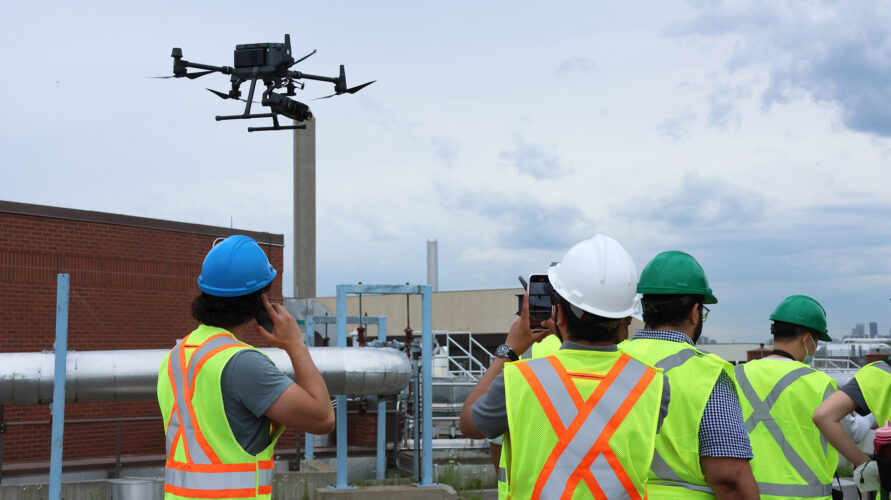By Victoria Paterson
Civil engineering professor Elsayed Elbeshbishy is leading a three-year, $1.4 million Alliance Missions research program addressing a critical climate change issue: greenhouse gas (GHG) emissions from wastewater treatment plants and sewer systems.

“Wastewater systems are major contributors to greenhouse gases globally,” said professor Elbeshbishy. “By gaining a deeper insight into emissions from these sources, the project aims to provide society with precise monitoring tools, practical recommendations and strategies for reducing emissions.”
Developing greener infrastructure
The project is investigating GHG emissions from three sectors of wastewater infrastructure: sewer networks, wastewater treatment processes and sludge management processes.
Detection methods for these sectors are incredibly high-tech and include ground-level sensors in air and water, drone sensors, hyperspectral cameras, aircraft detection and satellite detection. At the Toronto plant, some of these techniques have already been leveraged to measure and monitor both methane and nitrous oxide gases. These two gases are hundreds of times stronger than carbon dioxide in contributing to the greenhouse effect.
“Ultimately, it will help us develop greener wastewater infrastructure,” said professor Elbeshbishy. In addition to the monitoring and measuring already underway, he and his team have created a digital twin, which is in the initial testing phases. A digital twin is a virtual model of a physical object or system that incorporates data. By mirroring the physical reality and operations, this virtual version can be used to test proposed improvements and solutions.
The experience at the Toronto wastewater treatment plant has already shown benefits for the next generation of talent. “We are having an extraordinary learning experience, especially for the young people working on the project,” he said.

The project involves 16 partners, including municipalities, industry representatives and other universities. Notable partners include Brown and Caldwell, USP Technologies, the City of Toronto, Metro Vancouver, the City of Calgary and the Municipality of Middlesex Centre.
“This project is advancing innovative climate change research practices and positions TMU as a global leader in green wastewater management,” said Steven N. Liss, vice-president, research and innovation. “It will provide first-of-its-kind insights for reducing greenhouse gas emissions across Canada.”
Key project objectives
Monitoring GHG Emissions: The team will use ground, drone, aircraft and satellite detection tools at different locations across Canada in Ontario, Alberta and British Columbia. They will cover all seasons and weather conditions to monitor GHG emissions from wastewater treatment plants.
Pilot-Scale Sewer System Models: A state-of-the-art pilot-scale sewer system is being constructed to help us better understand GHG emissions from sewer systems.
Predictive Models: Existing mathematical models will be augmented with artificial intelligence technologies to predict GHG emissions from both wastewater treatment plants and sewer systems.
This Alliance Missions research program is supported by the Natural Sciences and Engineering Research Council of Canada (NSERC).









